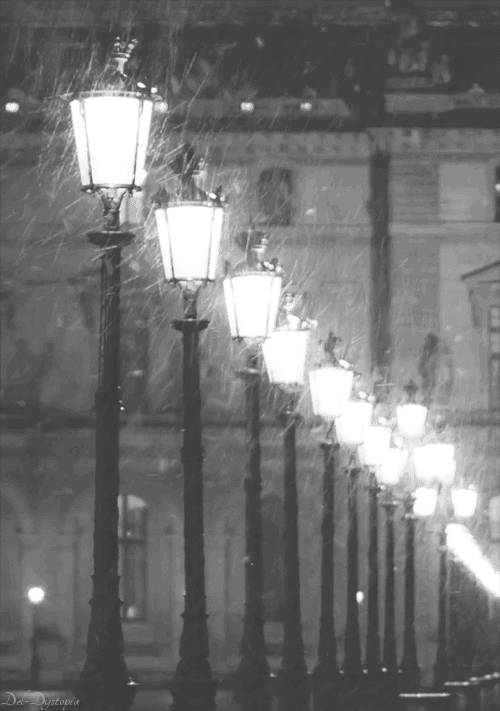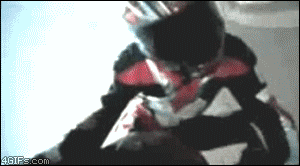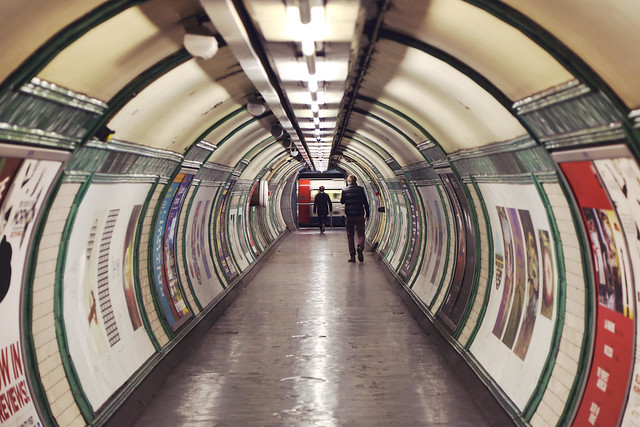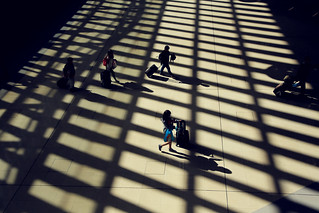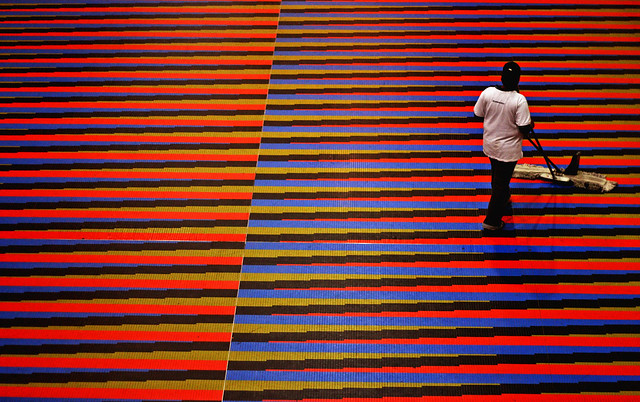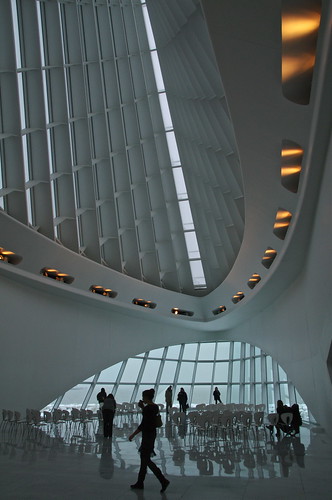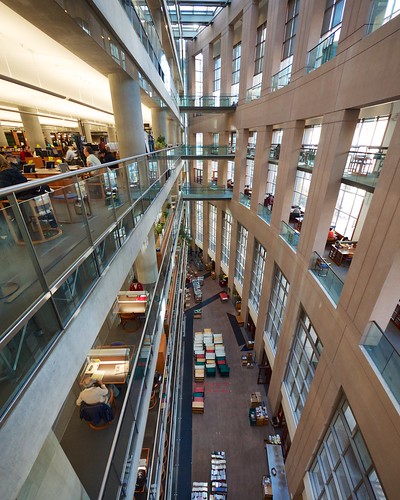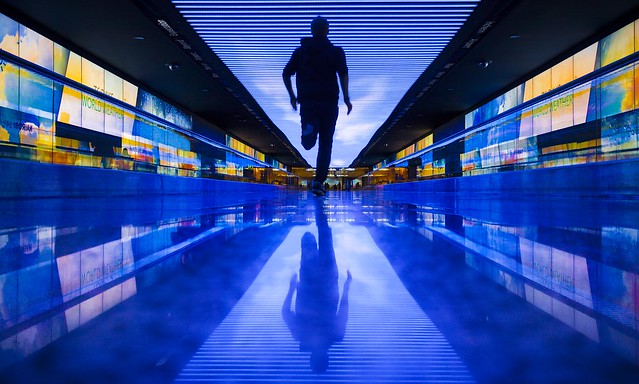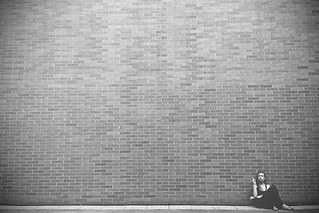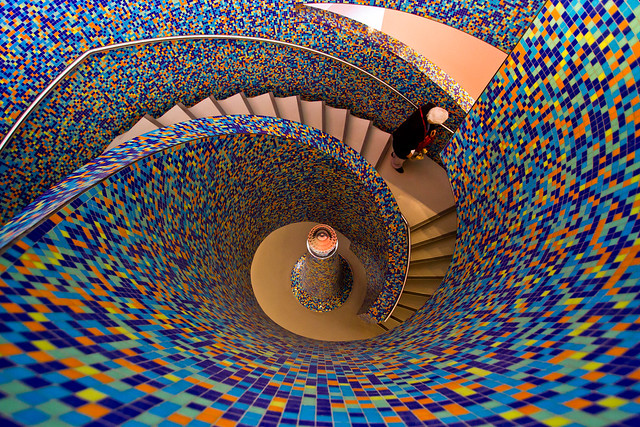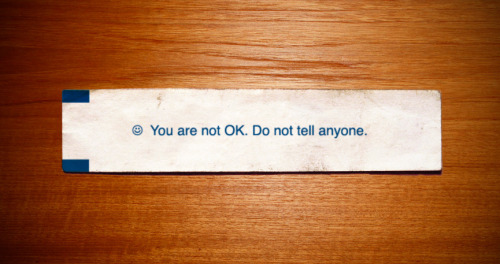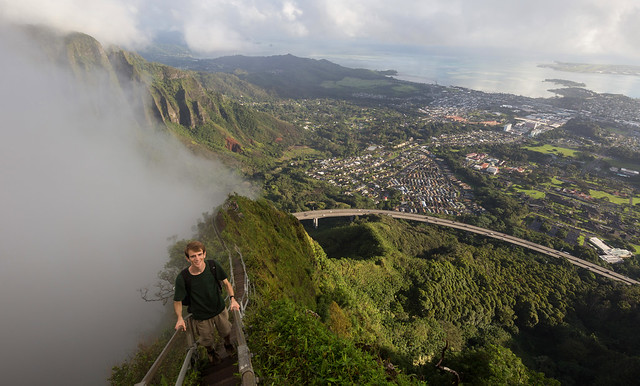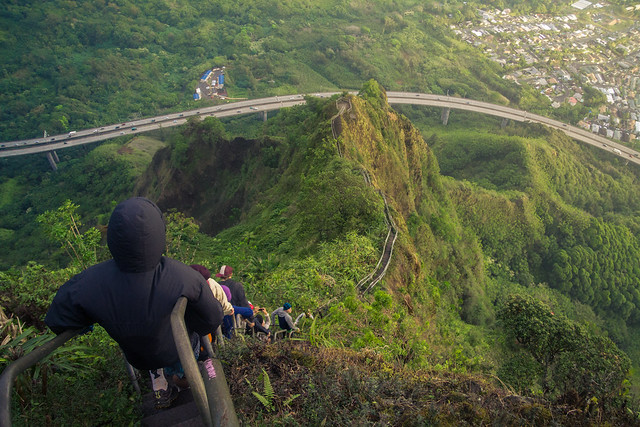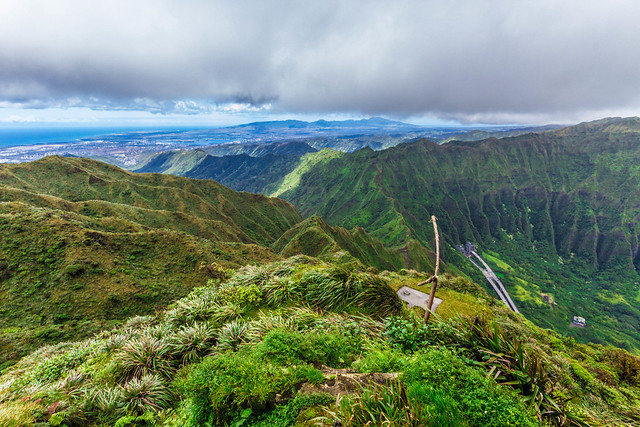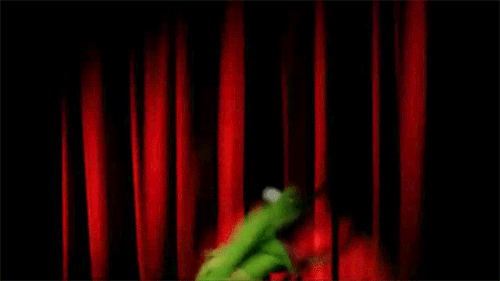
Cooper Griggs
Shared posts
Photo: Pothole Tries To Eat Pothole Repair Truck
Photo: Pothole Tries To Eat Pothole Repair Truck
by Mark Memmott
Ka-thunk. This pothole repair crew in East Lansing, Mich., met its match.
There's just something oddly appropriate about this photo from East Lansing, Mich., after a winter that's been so hard for so many people across the nation.
It seems that "a patching crew who went to fix a pothole on Harrison Road on Monday ended up with a much bigger hole to fill when a portion of their vehicle fell through the pavement," the Lansing State Journal writes.
Robert Boomer, a mechanical engineering student at Michigan State University, snapped the photo and posted it to his Facebook page. It's now gotten a fair amount of attention on Reddit and several news sites.
The State Journal says the truck dropped into the hole as it was backing up. Both the truck and the driver were OK afterward.
As happens each spring, potholes are a popular topic in the news. But it feels like they're even more notable this year:
— "2014 Shaping Up as an Epically Bad Year for Potholes." (Time.com)
— "Mayor, city leaders call road conditions an emergency." (Fox21News in Colorado Springs, Colo.)
— "Potholes taking a toll on vehicles this year." (The Boston Globe)
— "It's Pothole Season In North Country." (Fox28 in Watertown, N.Y.)
— "Hoboken residents furious over potholes, state of city streets." (NJ.com)
— "Potholes and Big Data: Crowdsourcing Our Way to Better Government." (Wired.com)
(H/T to NPR intern Lauren Katz.)
9())
Anatomical 3D Self-Portrait by Joshua Harker






Chicago-based artist Joshua Harker recently unveiled this 3D-printed sculptural self-portrait titled 21st Century Self-Portrait. Harker utilized a 3D scan of his face and a CT scan of his skull to form the components which were coupled with his trademark filigree aesthetic found in some of his other artworks (you might remember his Crania Anatomica Filigre project a while back, a piece now in his shop). 21st Century Self-Portrait was first shown at 3D Printshow in New York back in February. If you’re interested, Harker is now making custom printed masks based on your own 3D facial scan. (via Street Anatomy, Laughing Squid)
as i’m standing there alone in my home office filling in...

as i’m standing there alone in my home office filling in the stencil of my mural, it occurs to me that this is nothing more than a over-sized elaborate paint-by-numbers canvas.
and suddenly, happily, i’m just an over-sized elaborate 8-year old.
Turkish government bans YouTube following attempt to remove corruption videos
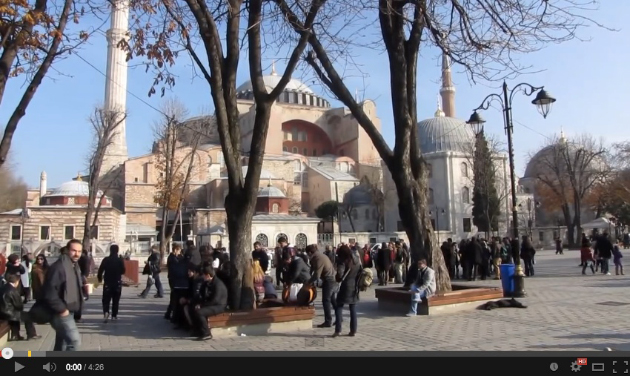 If you're currently in Turkey, get ready to fire up that VPN. The Turkish government has just added YouTube to its list of banned websites, which as of last week also included Twitter (that site is reportedly back online). According to Webrazzi, the...
If you're currently in Turkey, get ready to fire up that VPN. The Turkish government has just added YouTube to its list of banned websites, which as of last week also included Twitter (that site is reportedly back online). According to Webrazzi, the...
Why You Shouldn’t Worry about Facebook Buying Oculus Rift
I was as surprised as anyone when I heard that Facebook acquired Oculus VR, the company behind the Oculus Rift virtual reality headset. Oculus VR has repeatedly positioned its device as a gaming platform, and outside of supporting social games made by developers like Zynga, Facebook has relatively little experience in gaming at large. This, coupled with the fact that a lot of people dislike some of Facebook's practices, has left a lot of people confused and dismayed by the announcement.
Regardless of Facebook's privacy-related controversies, I think this acquisition is a clear boon for VR's biggest proponents, not a threat. Here’s why.
More Funds for Research and Development
Not long after the announcement, Oculus co-founder and VR visionary Palmer Luckey took to Reddit to defend the decision to join a large and controversial company like Facebook. For someone who’s made VR his life’s work, Luckey knows full well that developing new technologies requires money--lots of money. Luckey had this to say about the benefit of the acquisition:
“The partnership accelerates our vision, allows us to execute on some of our most creative ideas and take risks that were otherwise impossible. Most importantly, it means a better Oculus Rift with fewer compromises even faster than we anticipated.”
So, with more working capital, Oculus VR will improve the Rift faster than it could have before and bring it to market sooner than they previously envisioned? Makes sense. So far so good.
Facebook Has Proven its Ability to Grow Businesses
When Facebook acquired the photo sharing service Instagram nearly two years ago, there were 30 million active users. Today, that number is over 200 million. Did Facebook do this by fundamentally changing Instagram? No. If Zuckerberg’s statements to investors earlier today are to be believed, Instagram has continued to operate independently since it was purchased. That doesn’t mean that Facebook isn’t leveraging Instagram as a product, but apart from reducing it’s functionality on Twitter, Instagram has benefited from the partnership with Facebook because it's largely been left alone.
The association with a company like Facebook, whose proliferation of users is admirable, will expose Oculus VR and the Rift to a wider audience. With more people interested in VR, there’s a greater chance that game publishers will take VR seriously, and the medium will grow faster than it otherwise would have.
Facebook is in this for the Long Run

Facebook’s acquisition of Oculus VR is part of a long-term plan that aims to connect the global population, ideally, within the next 10 years. When discussing the development of VR, including gaming, Zuckerberg stated that he views VR as a five to ten year initiative. What that means is that Facebook isn’t in a rush to turn a profit on the hardware; it’s in a rush to fund development today to get results further down the road.
Though Zuckerberg made it clear that VR can serve Facebook’s business outside of gaming, he also said that Oculus VR was valuated at $2 billion “solely” for its gaming business alone, and that it is the “clearest opportunity” for the device. Time, Facebook money, and its belief in VR gaming equals a brighter future for the medium.
Facebook Supports Open Software Development
Facebook began its Open Compute Project in 2011, which aims to develop advanced, energy efficient data centers, but more importantly, share its findings with the industry at large in the form of open-source design documents. While that doesn’t mean Facebook will give away Oculus VR’s secret sauce, it’s proof that Facebook isn’t solely driven by monopolizing technology, and there’s a great chance it will keep Rift development open to anyone who’s interested.
...with more working capital, Oculus VR will improve the Rift faster than it could have before...
If Facebook throws more money at research and development, if it isn’t in a rush to turn a profit on VR, and it respects the Rift’s value as a gaming platform, why should this acquisition negatively impact the future of VR gaming? We know that the Rift will also be leveraged for non-gaming purposes that tie into Facebook’s advertising network, but that doesn’t mean gaming will as well.
Not everyone is convinced. Mojang pulled out of a potential deal to bring Minecraft to the Rift due to owner Markus Persson’s feelings that “Facebook creeps me out.” But, who says VR gaming will be threatened just because a service-based company with a social focus is involved? I’m optimistic that Facebook will help legitimize VR as a future gaming medium, and that Oculus VR will benefit as a result of time and further investments.
What do you think? Will VR gaming benefit or suffer from Facebook’s involvement?
The World’s Smallest Sandcastles Built on Individual Grains of Sand by Vik Muniz and Marcelo Coelho




Artist Vik Muniz (previously here, here, and here) is known for his gigantic composite installations and sculptures created from thousands of individual objects. In this new collaboration with artist and MIT researcher Marcelo Coelho, Muniz takes the opposite approach and explores the microscopic with a new series of sandcastles etched onto individual grains of sand.
The process of getting a sandcastle onto a speck of rock was anything but straightforward and involved over four years of trial and error utilizing both antiquated and highly technical methods. Muniz first drew each castle using a camera lucida, a 19th century optical tool that relies on a prism to project a reflection of whatever is in front of you onto paper where it can be traced. The drawings were then sent to Coelho who worked with a number of microscopic drawing processes for several years before deciding to use a Focused Ion Beam (FIB) which has the capability of creating a line only 50 nanometers wide (a human hair is about 50,000 nanometers wide).
Lastly, Muniz photographed the final etchings and enlarged them to wall-sized prints. He shared with the Creator’s Project: “When someone tells you it’s a grain of sand, there’s a moment where your reality falls apart and you have to reconstruct it. You have to step back and ask what the image is and what it means,” a fascinating play on scale and perception. Watch the new video above from the Creator’s Project to see how the project came together.
The sandcastles are on view starting today as part of a comprehensive exhibition of Muniz’ work spanning the last 25 years at the Tel Aviv Museum of Art. (via The Creator’s Project)
#Flickr10 Samplr Day 8: City Life
Enjoy this selection of urban life photos showing people and their interactions with the architecture that surrounds them.
You submited these photos to the #Flickr10 group in celebration of our 10th anniversary. Also check out our previous Samplr themes, and stay tuned for more Samplrs coming your way this week. Thanks for all your great contributions!
For our next #Flickr10 project, take a look at our announcement of the Global Photo Walk Day and see how you can become part of it.
Photos from [~Bryan~], FranekN, Pankcho, Cybergabi, Frank Fujimoto, www.mariusvieth.com, ♫CoolMcFlash♫, thomasrost, and iharsten.
The Argyle #australia #sign #theargyle #bar #restaurant #sydney...

The Argyle
#australia #sign #theargyle #bar #restaurant #sydney #harbor #travels #trip #rtw #worldtour #argyle #red #canon #2009
Marker Atop Mauna Kea #hawaii #maunakea #13796 #elevation...

Marker Atop Mauna Kea
#hawaii #maunakea #13796 #elevation #marker #dormant #volcano #island #geological #survey #benchmark #travels #trip #rtw #worldtour #canon
Plumeria Flowers #tbt #hawaii #plumeria #flowers #rtw #worldtour...

Plumeria Flowers
#tbt #hawaii #plumeria #flowers #rtw #worldtour #2009 #travels #trip #canon #beautiful
Milky Way Has 4 Billion Years to Live — But Our Sun Will Survive
Four billion years from now, our galaxy, the Milky Way, will collide with our large spiraled neighbor, Andromeda.
The galaxies as we know them will not survive.
In fact, our solar system is going to outlive our galaxy. At that point, the sun will not yet be a red giant star – but it will have grown bright enough to roast Earth’s surface. Any life forms still there, though, will be treated to some pretty spectacular cosmic choreography.
Currently, Andromeda and the Milky Way are about 2.5 million light-years apart. Fueled by gravity, the two galaxies are hurtling toward one another at 402,000 kilometers per hour. But even at that speed, they won’t meet for another four billion years. Then, the two galaxies will collide head-on and fly through one another, leaving gassy, starry tendrils in their wakes. For eons, the pair will continue to come together and fly apart, scrambling stars and redrawing constellations until eventually, after a billion or so years have passed, the two galaxies merge.
Then, the solar system will have a new cosmic address: A giant elliptical galaxy, formed by the collision and merger of the Milky Way and Andromeda.
This isn’t a chapter ripped from science fiction – it’s a real, scientific prediction. That science can forecast such events was the focus of the third episode of Cosmos: A Spacetime Odyssey. That Newton could describe the orbits of planets, and Halley the return of his eponymous comet, and contemporary astronomers, the end of the Milky Way – this gift of foresight is really a mathematical understanding of the physical laws that govern the movements of celestial bodies.
“Using nothing more than Newton’s laws of gravitation, we astronomers can confidently predict that several billion years from now, our home galaxy, the Milky Way, will merge with our neighboring galaxy, Andromeda,” host Neil DeGrasse Tyson says. “Because the distances between the stars are so great compared to their sizes, few if any stars in either galaxy will actually collide. Any life on the worlds of that far-off future should be safe, but they will be treated to an amazing, billion-year long light show.”
The galactic collision that closes out the third Cosmos episode follows the sequence in the animation below, which is based on a 2006 simulation by astrophysicist Brant Robertson*.
Video: NASA/Vimeo
Now, how on Earth do we know this is going to happen?
The story starts in the early 1900s, when astronomer Vesto Slipher measured the radial velocity of Andromeda — in other words, he calculated the speed at which the galaxy was moving toward or away from Earth. Slipher did this by looking for a telltale stretching or compression in the light from Andromeda arriving at Earth: Light from objects that are moving away from us is slightly stretched, or red-shifted. Light from objects moving toward us is blue-shifted, or compressed.
The result was a little bit surprising.
“We may conclude that the Andromeda Nebula is approaching the solar system with a velocity of about 300 kilometers per second,” Slipher wrote in the Lowell Observatory Bulletin in 1913 (Andromeda was called a nebula back then because astronomers didn’t realize it wasn’t part of the Milky Way; Slipher’s calculation strongly suggested that idea needed rejiggering).
So Andromeda was zooming toward us – that much at least seemed clear. Whether its arrival would mean the end of the Milky Way was still uncertain. For decades, scientists had no way of knowing whether Andromeda and the Milky Way would collide head-on, or if they would slip past one another like star-filled vessels in the cosmic night.
Turns out, it’s relatively easy to measure the velocity of faraway objects moving toward or away from us, but much more difficult to determine their sideways motion (something astronomers call “proper motion”). The farther away something is, the harder it is to measure its sideways motion, which doesn’t produce those telltale stretched or compressed wavelengths that astronomers can work with. Instead, astronomers rely on detailed observations of an object’s position relative to background stars – a small and subtle shift that without superior telescopes can take centuries to become apparent.

Artist’s conception of the future Earth, whose oceans have boiled away due to the Sun’s increasing heat, exiled to the outskirts of the new merged galaxy that astronomers have dubbed “Milkomeda.” (David A. Aguilar, CfA)
Loeb and then post-doc T.J. Cox simulated the impending collision and merger of Andromeda and the Milky Way using estimates of Andromeda’s proper motion. Their results showed a better than decent chance of the two galaxies smashing into one another, and a pretty good possibility of the solar system being punted to the outskirts of the resulting elliptical galaxy, which Loeb named “Milkomeda.”
In 2012, a team of astronomers based at the Space Telescope Science Institute re-did the collision calculations, this time using direct measurements of Andromeda’s proper motion. After all those years, the team was able to get those measurements with the Hubble space telescope – and an observing campaign that used years of data, beginning with images snapped in 2002.
“We compared images taken at different times with the Hubble Space Telescope, and measured how much the Andromeda stars have moved relative to the fuzzy galaxies in the distant background,” says astronomer Sangmo Tony Sohn. “This gives us a sense of how fast the Andromeda stars moved across the sky.”
The team concluded that Andromeda’s proper motion was tiny – and that a head-on collision was pretty much inevitable. That might sound a little bit traumatic, but it’s not all that unusual for galaxies to merge. The Hubble space telescope has captured some glorious images of faraway mergers and collisions, and astronomer Halton Arp included a number of galactic interactions in his “Atlas of Peculiar Galaxies,” published in 1966. They’re all really pretty.
The good news is that, as Tyson says, stars are so far apart that even though galaxies are colliding, the probabilities of stellar collisions are small. So the sun and its planets will likely survive the birth of Milkomeda, though Earth will no longer be able to call the Milky Way home. And we’ll no longer live in a spiral galaxy: Milkomeda will be elliptical in shape, and it’ll probably look pretty red, which you can see toward the end of the 2012 team’s animation, and in the animation above.
So there’s no doubt this merger is going to be a spectacle – and there’s a good chance that the Triangulum, a smaller, nearby galaxy, will get sucked into the fray. I, for one, am disappointed that I won’t be able to watch this great cosmic light show. For now, the best I can do is enjoy the sequence of illustrations below.

Present day; 2 billion years from now; 3.75 billion years; 3.85 billion years; 3.9 billion years; 4 billion years; 5.1 billion years from now; and 7 billion years from now, when the galaxies have formed a huge elliptical galaxy.
*9:45pm PDT, 3/24: This post has been updated to attribute the embedded animation to astrophysicist Brant Robertson, now at the University of Arizona, and his colleagues. NASA recently redid the animation.
imyourcocaine: ☁ sky is not the limit
Woman Has Her Skull Replaced With A 3-D-Printed Plastic One
Cooper GriggsHoly medical wonders Batman!
A woman with a rare bone disorder has had much of the top of her skull replaced with a 3-D printed plastic piece, Wired U.K. reports. Three months later, she's symptom-free and back to work.
The woman's condition made her skull increase in thickness, giving her severe headaches and affecting her eyesight. The surgery, performed at the University Medical Center Utrecht in the Netherlands, gave the woman a replacement that closely matched the original shape of her skull. "It is almost impossible to see that she's ever had surgery," her lead surgeon, Bon Verweij, said in a statement from the university.
Verweij's team has used 3-D printing to replace some portions of skulls before, but never to this extent, Wired U.K. reports.
You might see more such stories in the near future. While researchers are still working on 3-D printing soft tissues that are safe for transplants, 3-D-printed bony parts have already shown up in specific surgeries. As in the Utrecht case, doctors often emphasize how personalized such replacements can be.
Three years ago, a British man who had much of his pelvis removed got a replacement 3-D printed in titanium, the Ottawa Citizen reports. Printed titanium implants are made by spitting out titanium powder that's then fused by a laser beam. The man's doctor thought a printed replacement would fit better than a standard, handmade one. The man now walks with a cane, the Citizen reports.
In June 2011, a patient in Belgium received a 3-D printed titanium jawbone replacement. This was the first total lower jawbone replacement made to match a specific patient, the BBC reports.
And just last year, Livescience reported a Connecticut-based company received U.S. Food and Drug Administration approval to market a plastic replacement for 75 percent of the skull.
Mucho: New Year Special | September Industry
Mucho: New Year Special | September Industry
One in Five Americans Hasn’t Been to the Bank in More Than a Year
Are physical banks going the way of the telephone booth?
One in three people in the U.S. reports not visiting the bank for personal financial reasons in the past six months, while one in five hasn’t gone in over a year. That’s according to a new study from financial information aggregator Bankrate, which surveyed 1,003 people on their banking and finance habits earlier this month.
Here’s a chart showing the full breakdown of when people say they last visited a bank or credit union location, using data from the Bankrate report:
The low percentage of regular bank goers shouldn’t be too unexpected, considering the vast number of online and mobile banking options available today. Why schlep to your local teller when you can deposit a check from a smartphone or transfer funds between accounts with a few clicks?
In equally unshocking news, the Wall Street Journal reported in January that branch closures in the U.S. reached an all-time high of 1,487 in 2013. Branches themselves have been declining steadily since 2009, with their numbers shrinking to 96,339 last year.
In light of all that, what might be most surprising is that the Bureau of Labor Statistics isn’t predicting dramatic losses in employment for bank tellers over the next decade. Rather, the BLS projects that employment among bank tellers will remain relatively flat in the years leading up to 2022.
That prediction sure seems optimistic based on the grim outlook for bank branches and low percentages of frequent bank goers. It’s possible that the forecast, which is for the 10-year period between 2012 and 2022, was created before online and mobile banking really began to take off and threaten physical locations.
At any rate, it’s looking like workers shouldn’t put all their stock in a career as a bank teller. In 10 years, there might not be too many counters left to work behind.
Discovery! Possible Dwarf Planet Found Far Beyond Pluto’s Orbit
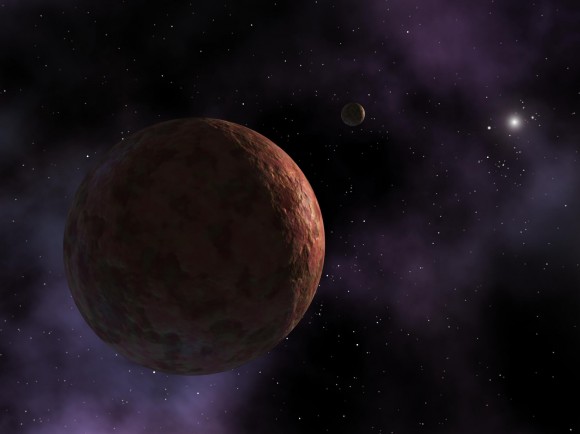
Artist’s conception of Sedna, a dwarf planet in the solar system that only gets within 76 astronomical units (Earth-sun distances) of our sun. Credit: NASA/JPL-Caltech
What is a dwarf planet? Some astronomers have been asking that question after Pluto was demoted from planethood almost a decade ago, partly due to discoveries of other worlds of similar proportions.
Today, astronomers announced the discovery of 2012 VP113, a world that, assuming its reflectivity is moderate, is 280 miles (450 kilometers) in size and orbiting even further away from the sun than Pluto or even the more distant Sedna (announced in 2004). If 2012 VP113 is made up mostly of ice, this would make it large (and round) enough to be a dwarf planet, the astronomers said.
Peering further into 2012 VP113′s discovery, however, brings up several questions. What are the boundaries of the Oort Cloud, the region of icy bodies where the co-discoverers say it resides? Was it placed there due to a sort of Planet X? And what is the definition of a dwarf planet anyway?
(...)
Read the rest of Discovery! Possible Dwarf Planet Found Far Beyond Pluto’s Orbit (1,056 words)
© Elizabeth Howell for Universe Today, 2014. |
Permalink |
6 comments |
Post tags: 2012 VP113, Eris, makemake, Oort cloud, planet x, Sedna
Feed enhanced by Better Feed from Ozh
nonconcept: Estate Bungalow in Sri Lanka by Narein Perera from...
Hawaii’s forbidden ‘Stairway to Heaven’
What began as a rickety wood pathway to install antenna cables over a cliff in 1942 has become a hiker’s enigma often called the “Stairway to Heaven.”
World War II motivated the U.S. military to build a radio transceiver station atop Hawaii’s Puʻukeahiakahoe mountain. The station sent low-frequency signals to communicate with submarines navigating around Japan. The Haiku Stairs (Haʻikū means “sharp break” in Hawaiian) offers a steep 2,500-foot ascent on Oahu that reaches the now abandoned station. Despite receiving an $875,000 metal renovation in 2003, according to to-hawaii.com, the trail is forbidden to many visitors wanting to endure the series of steps. The prohibition, nevertheless, hasn’t held back everyone from the climb and arriving at its wonderful island landscape views.
We asked the Friends of Haiku Stairs (FHS) volunteer organization to get the inside scoop on the popular attraction:
What’s the current status and future of the Haiku Stairs?
FHS: Climbing on the stairs is illegal without consent from the owners — there are several, and they asked us not to share all of their names. The Friends of Haiku Stairs have a working agreement with all of the owners and are trying to obtain the newly required $1 million insurance policy that one of the owners is requiring us to have before we can even access them again, and that is only for maintenance and not recreation.
There is a continued movement to demolish the stairs altogether that is being fueled by people accessing them illegally. We believe there’s a better solution: Open the stairs to allow people to climb in safe conditions and that will alleviate the trespassing. To get there, we need political will.
Is it safe to climb the stairs?
FHS: The stairs are safe to climb if conditions are favorable, with caution, and in the daylight. People continue to access them illegally through the neighborhoods; or worse, they try to access them from the back side which is a treacherous, dangerous hike. The result is a surge in emergency calls and a strain on efforts from police and rescue teams.
Photos from jselanikio, geekyrocketguy, thejoltjoker, Kyle Ford, John.Mccluskey, Michael Keany, bennyboie, and ERiN SiTT.

